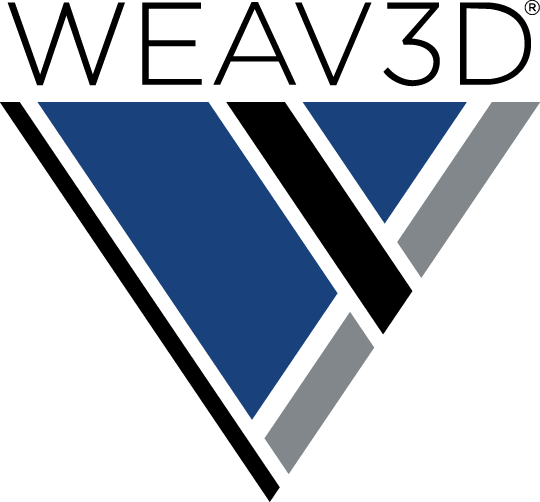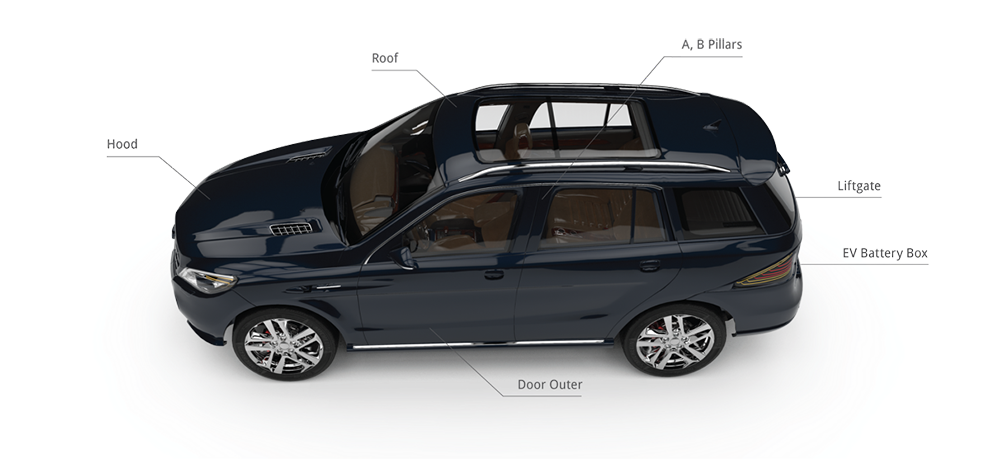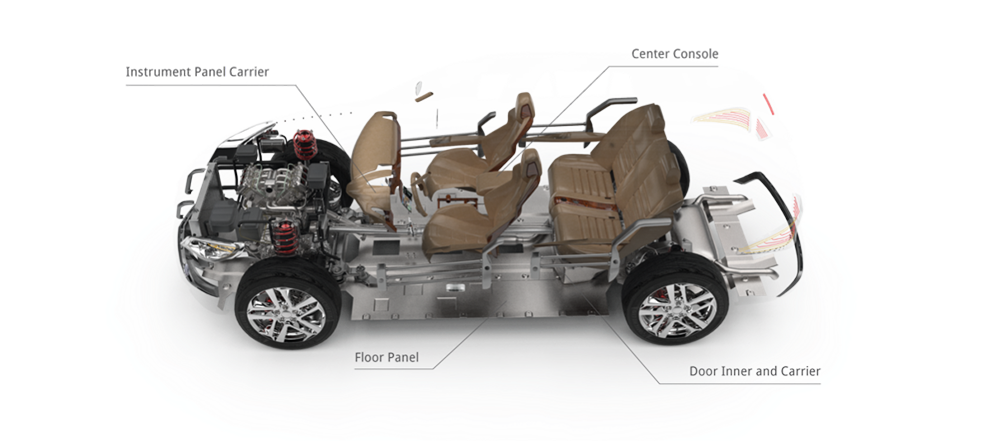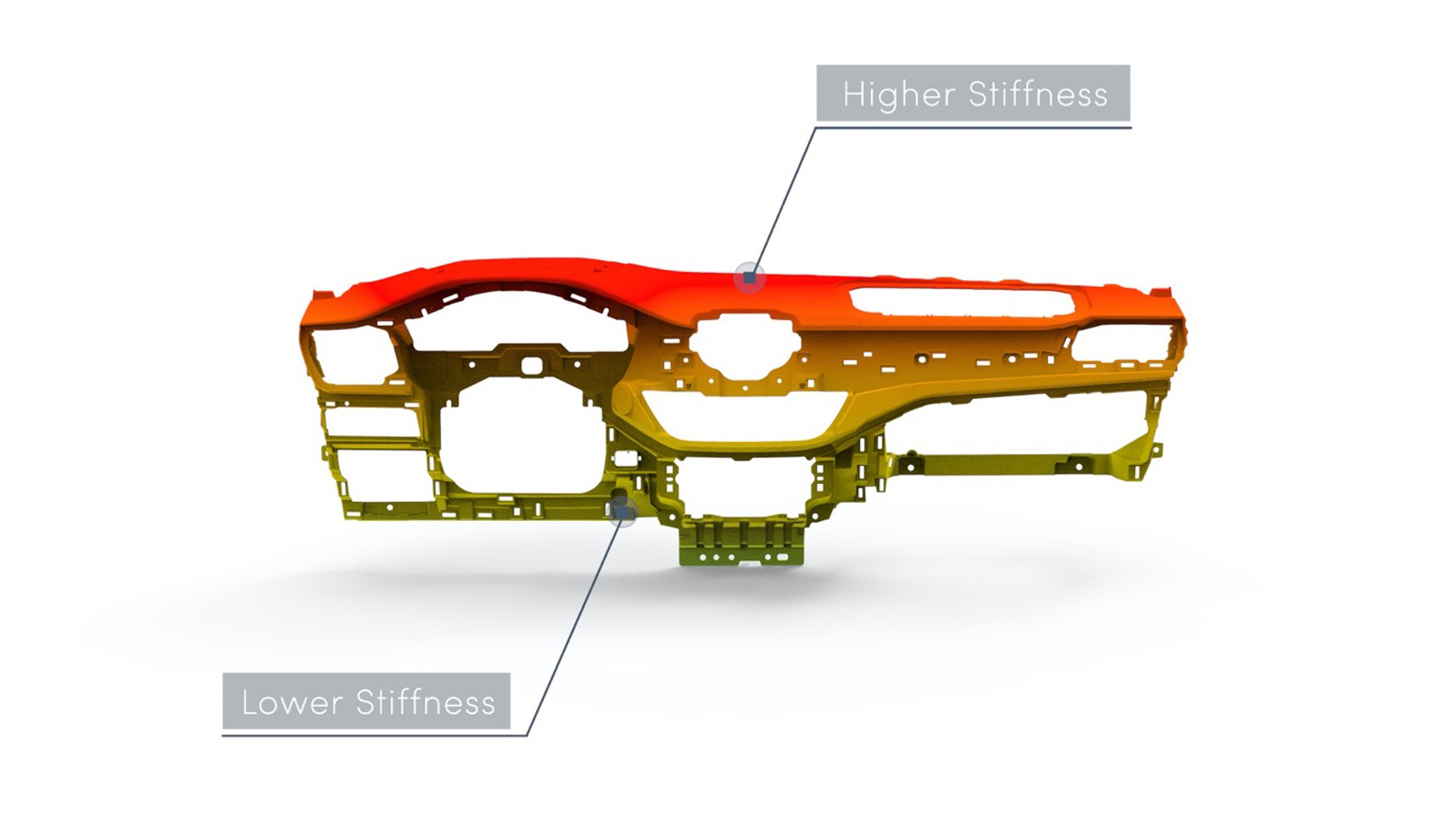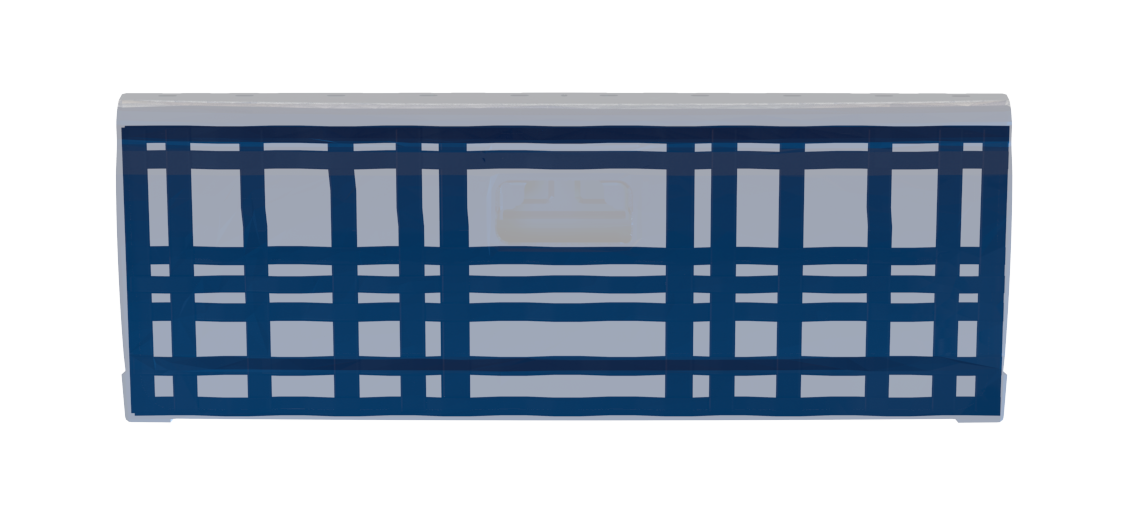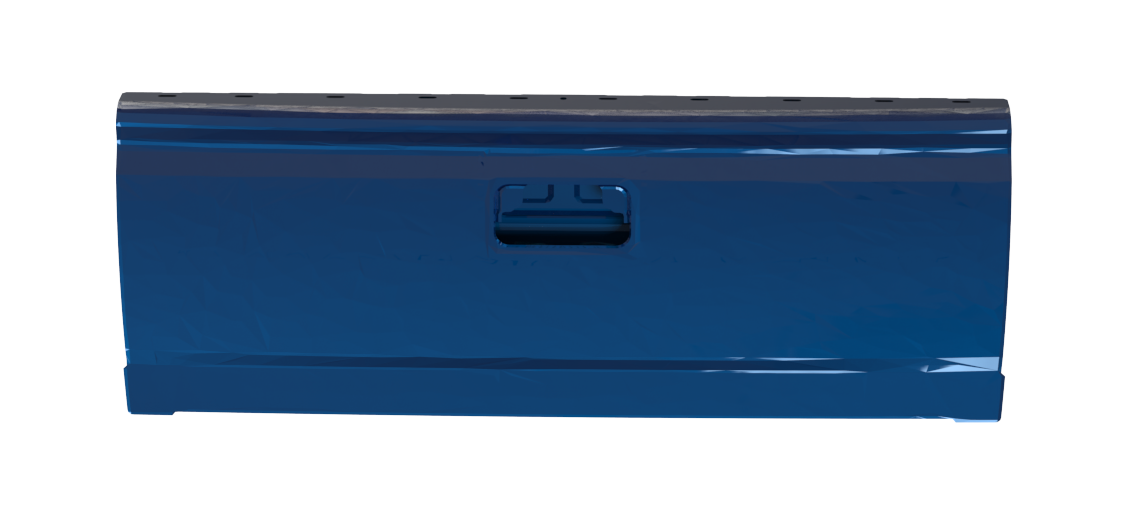As the automotive industry drives toward more fuel-efficient and electric vehicles, lightweight structural composites will be a key enabling technology. Even a 10% reduction in the weight of a gasoline-powered vehicle can increase its fuel economy by 6 to 8%, or the same weight reduction can produce a 1.5% increase in battery pack efficiency (miles per KWh). Our patent pending reinforcement materials allow you to lightweight a wide variety of automotive interior and exterior components—everything from instrument panels to body panels.
The WEAV3D® process is based on a woven composite lattice reinforcement that we describe as Rebar For Plastics®. Our patented and patent pending lattice forming machines produce the lattice structures from a variety of commercially sourced unidirectional fiber-reinforced composite tapes—available in a range of thermoplastic polymers including polypropylene, PET, PETG, polyamides and polycarbonate. The WEAV3D composite lattices are then overmolded into a finished structural component using conventional molding processes, such as injection or compression molding.
WEAV3D® Value Proposition

This method has a number of advantages over traditional composite technologies, not to mention steel and aluminum components:
- Tunable strength and stiffness. By tuning the weave density, tape materials and number of layers in the WEAV3D® lattice preform, the performance of the part can be locally tuned to meet application-specific targets while minimizing cost. We’ve developed extensive finite-element-based simulation capabilities to optimize the design of lattice-reinforced parts. The ability to deliver strength and stiffness where and as needed has significant cost implications.
- Scales for automotive production. Because our technology works with existing automotive molding processes—both injection and compression molding—there’s no need to reinvent production lines. Our lattice forming machines are optimized to support automotive volumes of hundreds of thousands of units per year.
- Redefine the design constraints. Our ability to selectively increase the strength and stiffness of components opens up new design possibilities. We can optimize parts for unique combinations of weight reduction, structural performance and cost. For example, our technology allows thinner, lighter parts to maintain a given level of structural performance. It’s not uncommon for our lattices to eliminate the need for ribs and similar part features on injection molded parts, saving material, weight and tooling costs.
- Materials variety. Our woven lattices are compatible with a wide range of polymers used by the automotive industry—including polypropylene, ABS, PET, PETG, polyamides and polycarbonate. The lattices also complement traditional reinforcements such as long- or short-glass fiber. And when optimizing the stiffness and weight of a component, combining our lattice with long or short fiber-reinforced plastic is often the most cost-effective solution.
- Favorable weight-to-cost ratio. Conventional polymer composites can take the weight out of automotive structures, but only at a high cost—from the materials system, the production process or both. Based on the design, materials and processing advantages we just described, our technology promises up to a 75% cost reduction versus high-volume composites production methods—and even more compared to hand layup.
